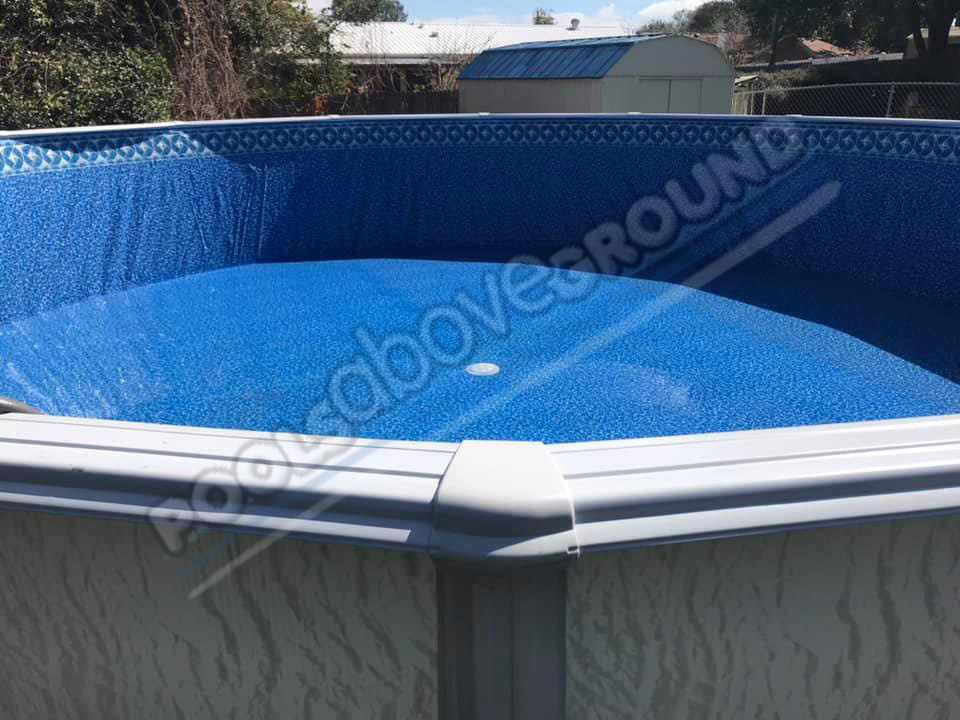When To Change Your Above Ground Pool Liner
Your pool liner is one of the most important aspects of your above ground pool. Not only does it form the waterproof barrier makes your pool a pool, but it allows you to determine its pattern, color, or style. But even the best liners don’t last forever, and they need to be replaced every five years in Florida. But, how do you know if it’s time to make the switch? We’ll discuss it in more detail below.
Reasons to Change a Pool Liner
Though we stand by our recommendation to replace your liner every five years or so, most pool owners will wait for a problem to crop up before they take action. After all, changing a pool liner isn’t cheap, nor is it a particularly fun endeavor. That said, failing to replace a bad pool liner can cause problems that are much more expensive down the line. We’ll look at some potential issues below
Cracks or Rips
Between the exposure to UV rays and the chemicals used in your pool, the vinyl in your pool liner will eventually become brittle and weak. This normally starts near the waterline, but it can also occur at the bottom of your pool. While some tears and leaks can be patched easily, their frequent appearance means it’s time to change the liner out.
Fading or Staining
The same chemicals and UV rays listed above can also fade your liner to the point where it simply doesn’t look good anymore. Simultaneously, the loss of color or addition of large dark stains may indicate cracks and rips are just around the corner or the presence of microorganisms.
Water Loss
It’s easy to assume that any cracks or rips in your pool’s lining will be easy to spot, but this isn’t always true. For instance, if you have a particularly old liner, it could be leaking from folds, creases, and near drains where trouble is hard to spot. If you suspect you’re losing water to more than evaporation, it’s time to check for leaks or change the liner.
Getting a New Liner
Before you go about actually changing your pool liner (which we’ll detail in a different post), you need to get your hands on a suitable replacement. Of course, you should first know what sort of liner you currently have installed and whether you plan to change to a different system. Though most homeowners will remember all this information, people who’ve purchased homes with pools already installed may not know the details. Fortunately, all above ground pool liners will fall into one of three categories.
Type of Liners
Overlap
True to their name, these liners are easy to identify as they simply go up the inside of the pool wall and hang over on the outside, leaving several inches of excess vinyl visible. These liners are held in place with strips of plastic called liner coping strips. These plastic strips are designed to pinch down on the liner holding it in place on the pool wall. The coping strips brittle and crack and should be replaced when the liner is being changed. Overlap pool liners are made to fit 48″ 52″ or 54″ pool walls.
Beaded
Also known as “snap bead” liners, these feature a bead receiver that goes around the rim of the pool. To remove and/or install the pool liner, you simply unsnap the bead from the receiver by pulling up on the liner and it’ll pull out of the track or receiver.
UniBead
This sometimes is also referred to a j-hook liner. The top of this type of liner features a “V” design that you can simply clasp to hook to the top edge of the pool. These are very easy to install in any above ground pool because all of the guess work has been removed. Just hook on to the wall and you’re done. It’s is very important to know the pool wall height and acquire the proper height liner.
Now, just because you have one liner system in place doesn’t mean you can’t’ switch. However, you should be prepared with all the adequate measurements when ordering your new liner. For instance, overlap liners don’t need a “height” measurement due to the excess material included. Beaded and Unibead liners, however, will need to be precise.
How to Measure Your Pool
If your pool is oval or round in shape, you’ll first want to measure it from side to side and end to end. Make sure you’re as close to the center point as possible when making these measurements, as you don’t want to be off when placing your order. Fortunately, most round and oval pools will be of somewhat standardized dimensions.
The next step is to measure the height of the wall. An estimate is usually good enough if you plan on getting an overlap liner, but you’ll want to be much more deliberate when preparing for a snap bead model. Generally, your wall height will be 48″, 52″, or 54.”
Before Reinstalling
Once you get your old liner out of the pool, it’s time to do a quick inspection of the frame, pool wall, etc. Examine the wall itself. Are there any areas of rust? If so, can they be sanded down and repainted? You’ll also want to check for thin areas that could use a bit of reinforcement. These typically occur near the skimmer and return, so check there first.
Next, examine the pool base. Do you see any moss or mildew starting to grow? You should also look for any roots, weeds, or grass that might need to be removed before the new liner goes in. If you have sand underneath, it can usually do with a little bit of smoothing. In fact, you might need to bring in some additional sand to reform and reinforce the base.
Lastly, you’ll want to look at all of your components. After all, this is the last time you’ll get to see your pool this way until you change your liner again. Take a look at the filter system, its gaskets, and any hoses running to and from it. Check the O-rings and seals and make sure they don’t need to be replaced before you refill. After that, take a look at the pool cove, pads, and insulation to make sure they don’t need to be replaced. If they do, now is the (only) time to do it!
In Conclusion
If you don’t have a functional liner, you don’t have a pool – it’s that simple. If you aren’t ready and willing to perform the necessary upkeep and maintenance on your liner, you might wake up one day to a much more challenging (and expensive) problem. Again, try to change your liner every five years if you’re in Florida, and be sure to check for leaks, cracks, and fading regularly.
For more helpful articles like this one please checkout our website at http://lakelandabovegroundpools.com/


